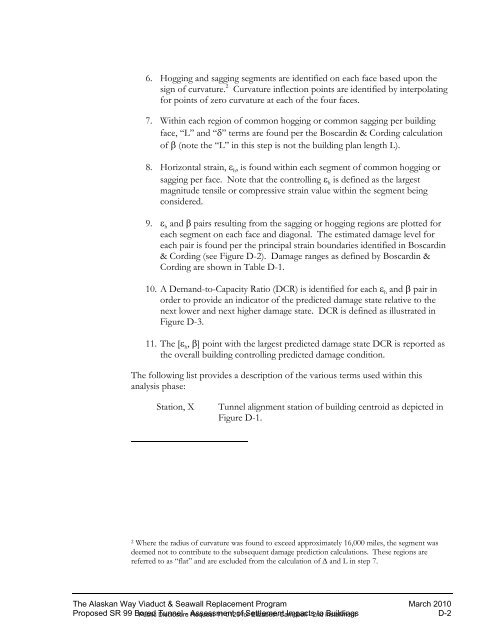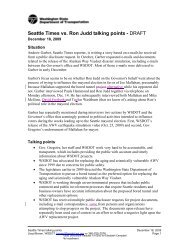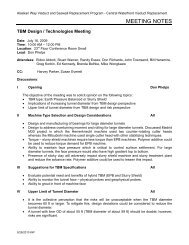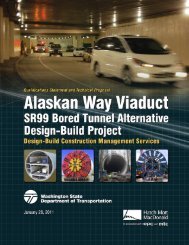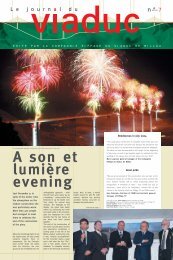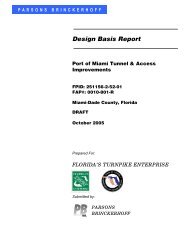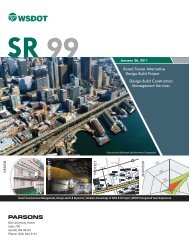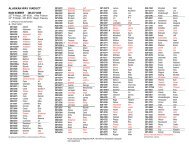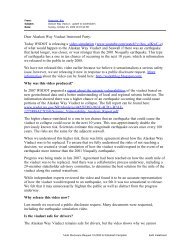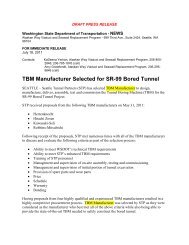SR99 Bored Tunnel-Assessment of Settlement Impacts ... - SCATnow
SR99 Bored Tunnel-Assessment of Settlement Impacts ... - SCATnow
SR99 Bored Tunnel-Assessment of Settlement Impacts ... - SCATnow
Create successful ePaper yourself
Turn your PDF publications into a flip-book with our unique Google optimized e-Paper software.
6. Hogging and sagging segments are identified on each face based upon thesign <strong>of</strong> curvature. 2 Curvature inflection points are identified by interpolatingfor points <strong>of</strong> zero curvature at each <strong>of</strong> the four faces.7. Within each region <strong>of</strong> common hogging or common sagging per buildingface, “L” and “δ” terms are found per the Boscardin & Cording calculation<strong>of</strong> β (note the “L” in this step is not the building plan length L).8. Horizontal strain, ε h , is found within each segment <strong>of</strong> common hogging orsagging per face. Note that the controlling ε h is defined as the largestmagnitude tensile or compressive strain value within the segment beingconsidered.9. ε h and β pairs resulting from the sagging or hogging regions are plotted foreach segment on each face and diagonal. The estimated damage level foreach pair is found per the principal strain boundaries identified in Boscardin& Cording (see Figure D-2). Damage ranges as defined by Boscardin &Cording are shown in Table D-1.10. A Demand-to-Capacity Ratio (DCR) is identified for each ε h and β pair inorder to provide an indicator <strong>of</strong> the predicted damage state relative to thenext lower and next higher damage state. DCR is defined as illustrated inFigure D-3.11. The [ε h , β] point with the largest predicted damage state DCR is reported asthe overall building controlling predicted damage condition.The following list provides a description <strong>of</strong> the various terms used within thisanalysis phase:Station, X<strong>Tunnel</strong> alignment station <strong>of</strong> building centroid as depicted inFigure D-1.2 Where the radius <strong>of</strong> curvature was found to exceed approximately 16,000 miles, the segment wasdeemed not to contribute to the subsequent damage prediction calculations. These regions arereferred to as “flat” and are excluded from the calculation <strong>of</strong> ∆ and L in step 7.The Alaskan Way Viaduct & Seawall Replacement Program March 2010Proposed SR 99 <strong>Bored</strong> <strong>Tunnel</strong> - <strong>Assessment</strong> <strong>of</strong> <strong>Settlement</strong> <strong>Impacts</strong> to Buildings D-2Public Disclosure Request 11-0123 for Elizabeth Campbell - 2nd installment


